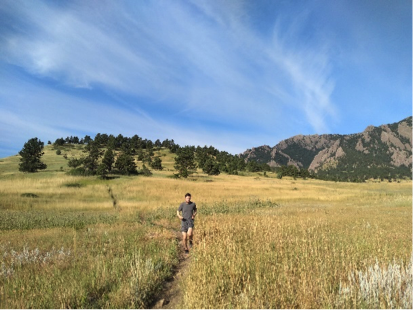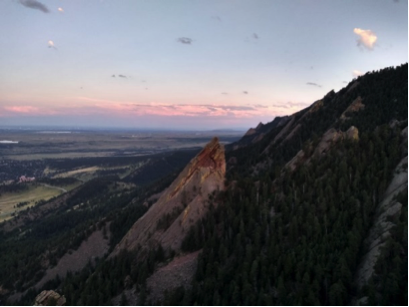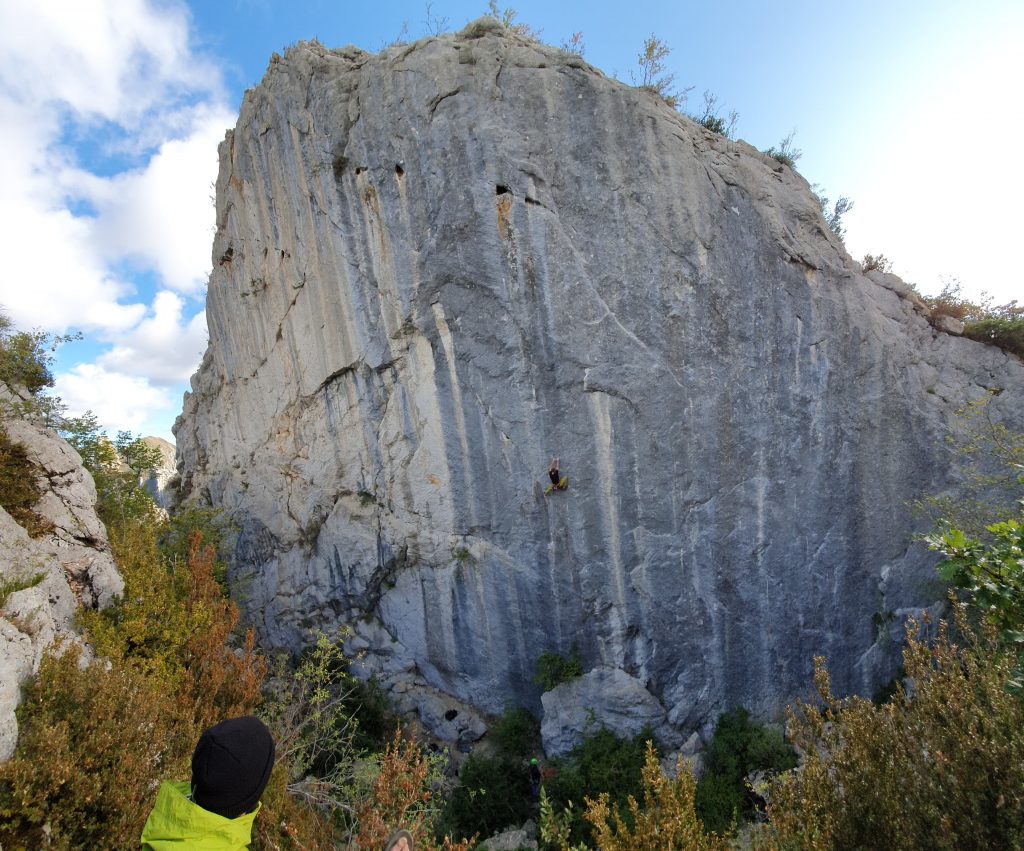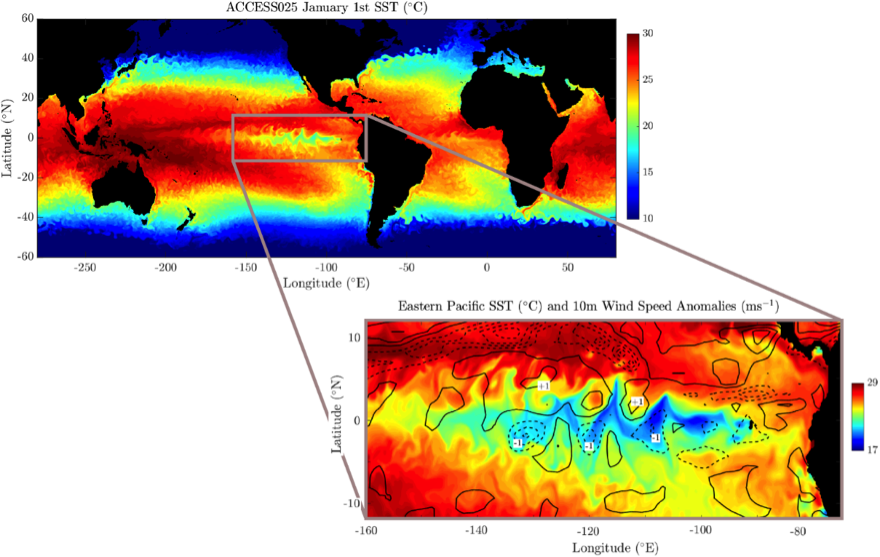by Ryan Holmes
2019 was a busy year, as usual. Along with the usual fun times, life changes, research, struggles, teaching etc., I made the most of the opportunities available as a CLEX postdoc and scientist with two overseas trips to North America and France. Now that the dust is settling, I’ve had a chance to reflect on how I’ve benefited and what I’ve learnt.
The IUGG general assembly in Montreal, Canada
My month-long trip to North America in June began with the IUGG conference in Montreal. I have previously attended an IUGG conference in South Africa in 2017 where it struck me how international and diverse the IUGG community was.
The main large international conferences in Earth science are AGU in the US and EGU in Europe. However, I have always found EGU and AGU to be a little insular – Americans, in general, don’t attend EGU and Europeans don’t attend AGU. IUGG, on the other hand, puts a lot of emphasis on building a diverse community, with incentives and funding in place to encourage attendance by scientists from minority countries. Consequently, I found that the interactions I have had at IUGG involve a wider range of perspectives and ideas.
At the Montreal edition of IUGG, I had lots of fun, productive conversations and received input from a variety of people on my global ocean heat transport work. This led not only to improvements in my recently accepted GRL article (Atlantic ocean heat transport enabled by Indo-Pacific heat uptake and mixing – shameless self-advertising) but also to a few ideas for future collaborative projects.
Montreal in summer was also a great venue for the conference. They really know how to enjoy the good summer weather there, with lots going on in the streets in the evenings (such as jazz and circus festivals) and some great food and drink. The IUGG general assembly jumps around to different locations all over the world, so if you’re sick of dealing with the crowds at AGU or EGU, consider attending IUGG next time (not to mention they let you submit multiple first-author abstracts – I gave two talks!).
Three weeks at NCAR in Boulder, Colorado
The main purpose of my trip to North America was to continue a fruitful collaboration with a group at NCAR in Boulder (a CLEX partner institution). The group was led by Daniel Whitt, a project scientist at NCAR who had done his PhD in the same group as me and, together with a few other scientists at NCAR and the University of Washington, we were working on a NOAA funded project to study turbulent mixing and upwelling in the eastern tropical Pacific cold tongue.
This cold tongue plays a key role in the global heat and carbon budgets as well as being the centre of action of the El Nino – Southern Oscillation. However, there is still a lot that we don’t understand about the workings of the cold tongue, such as the dynamics of processes acting at spatial scales near and below the 100km horizontal resolution of typical climate models.
One important process in the region is the oceanic instabilities that grow on either side of the cold tongue known as Tropical Instability Waves (TIWs, see Fig. 1) – the subject of my PhD. TIWs play an important role in the cold tongue heat budget by mixing cold tongue waters with the warmer waters to the north. TIWs are also thought to influence vertical fluxes of heat into the ocean interior associated with three-dimensional turbulence, one of the foci of our NOAA funded project.

Figure 1 (above): An animation of sea surface temperature (top) and vertical velocity at 50m (bottom) from a 1/20° (6km) horizontal resolution ROMS simulation of the eastern equatorial Pacific. The westward propagating cusps of cold water on either side of the cold tongue are Tropical Instability Waves (TIWs), which warm the cold tongue by mixing cold tongue waters with the surrounding warmer waters, as well as influencing vertical mixing and upwelling in the region (the vertical velocity at 50m is shown in the second panel).
The project aims to study turbulence and its links with upwelling in the cold tongue on a large range of spatial scales (see Fig. 1b) using a hierarchy of numerical models. These models range from the 1/20° (6km) TIW-resolving regional ocean model simulation shown in Figure 1 to much smaller-scale Large Eddy Simulations (LES) that are nested inside the regional model and can resolve three-dimensional turbulent mixing down to a scale of meters. The project hopes to revolutionize our knowledge of turbulence variability across scales in the cold tongue as well as contribute to decision processes involved in the design of the new Tropical Pacific Observing System (TPOS) 2020.
Not only is Boulder a great place to visit for the science, but it offers endless opportunities for outdoor activities such as hiking, rock climbing and trail running.


Figure 2: Fun in the Boulder front range. Above left: My colleague Daniel Whitt on a trail run out from NCAR. Above right: A view of the third Flatiron at sunset after a post-work trail run. The NCAR Mesa Lab Is the building visible in the bottom left. It is evident from the sky in these photos why the National Centre of Atmospheric Research is based here
The Mesa Lab at NCAR is situated right at the foothills of the Boulder front range. Stepping out the back of the Mesa Lab puts you right on to some amazing trails in amongst the Flatirons – a series of gently sloping rock formations that dominate the Boulder skyline. The weather was perfect for trail running and rock climbing, and despite recovering from a recent surfing accident I made the most of the opportunities I had (Fig. 2).
Paris, Grenoble and Toulouse in France
Following my trip to Boulder, I returned to Australia for a short month and a half before heading off again, in September, to Europe for five weeks. My partner is French and we regularly venture back to her home country for family visits and holidays (and to eat croissants…). Many of these trips involve rock climbing, and this one was no different (e.g. see Fig. 3).


Figure 3: Climbing on the beautiful limestone cliffs of southern France. Photo credit: Shane Yates
However, on this trip I had also planned to visit a number of the oceanography groups in France to give seminars on my ocean heat transport work, maintain some old collaborations and build up some new ones (CLEX did not fund my flights but did fund my travel within France for these institutional visits).
The trip started with a three-day visit to the LOCEAN oceanography laboratory in Paris where my seminar stoked some lively conversations on subjects such as numerical mixing in ocean models and how model simulations of the abyssal ocean can be improved. These conversations continued during my visits to the oceanography groups in Grenoble and Toulouse. I particularly enjoyed my trip to Grenoble where the group was very dynamic, and I fielded almost 30 minutes of questions after my seminar.
One goal I had for these visits was to strike up new collaborations with several air-sea coupling experts in the French community.
Tropical Instability Waves in the eastern Pacific cold tongue are not only important in terms of ocean mixing as discussed earlier, but they are also strongly coupled to the atmosphere. TIW sea surface temperature anomalies induce large variability in atmospheric surface winds and air-sea heat fluxes (Figure 4 shows an example from a high-resolution ¼-degree ocean version of the ACCESS coupled model).
I am currently putting together a DECRA research proposal on this subject focused on the impact of these atmospheric feedbacks on the ocean circulation and the heat budget of the equatorial cold tongue. As part of the proposal, I will develop a new eastern Pacific configuration of the NEMO-OASIS-WRF (NOW) regional coupled model developed in France but also used by Alex Sen Gupta and others at CLEX for Australian climate.

Figure 4: Sea surface temperature (°C) from a coupled global climate model ACCESS025 with ¼° horizontal ocean resolution. The lower panel shows a zoom in the eastern equatorial Pacific where energetic Tropical Instability Waves (TIWs) impact the atmospheric surface wind speed (wind speed anomalies are shown with the contours). A decrease in atmospheric boundary layer stability above warm water enhances the surface winds by mixing momentum toward the surface. The feedback of these surface-temperature-induced wind anomalies onto the ocean is not properly captured by ocean-only models.
My visit to France provided the perfect opportunity to discuss my ideas with the French experts, narrow down my research questions and put together some more detailed experimental plans. In this respect, I found the French to be particularly keen to collaborate and share data from their previous experiments.
A note on carbon emissions
While international travel provides benefits for scientific collaboration and knowledge development and sharing, it does not come without a price. A typical flight from Sydney to Europe is associated with over 4 metric tons of carbon emissions per passenger. A rough calculation reveals that these two international trips (associated with ~9 tons of equivalent carbon emissions) made up over half my total carbon footprint for the year (roughly 15 tons).
When asked about his carbon footprint recently in a CCRC seminar Gavin Schmidt responded by highlighting the benefits of broadening your horizons and experiencing different cultures, and how this can build your compassion for making a difference. While I agree with this, I think it is important for us as scientists to weigh the benefits and costs of each trip carefully.
So, next time you are booking an international trip I would encourage you to consider questions such as; Can I extend the trip to a conference with a few institutional visits to get more bang for my buck? Could I replace this trip with a few conference calls? Have I travelled too much this year already?
Happy CLEXing!
